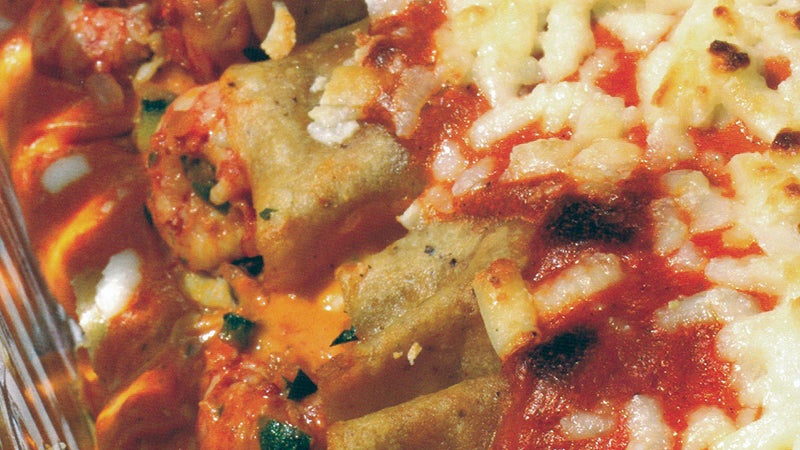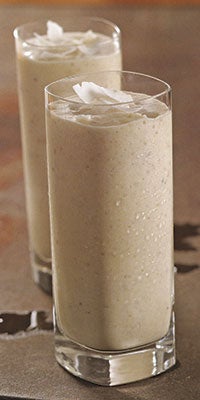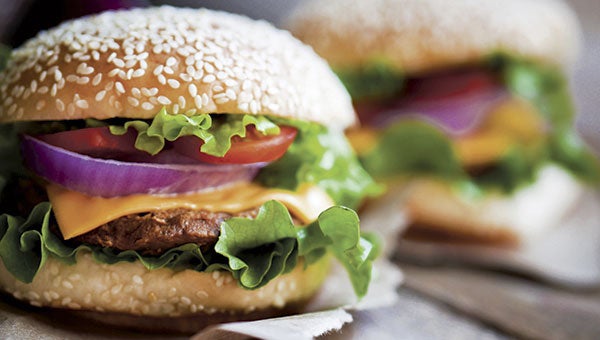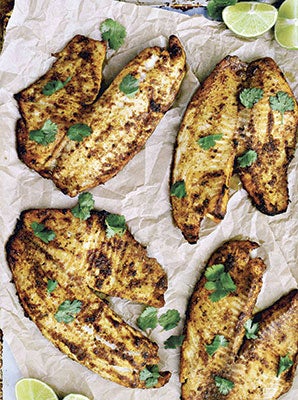Scallops are wonderful for winter
Published 12:31 am Saturday, January 7, 2017
Winter is a wonderful time of the year for scallops. They are harvested in Maine only in the winter and can retail from $20-$35 per pound. These are usually not frozen and offer the wonderful sweet flavor that makes scallops so good to eat. Try not to buy scallops that are brilliant white and slippery, because this means they have been chemically treated. Instead, choose ‘dry’ scallops that are more ivory in color (or pink or orange, a natural variation) with an almost sticky feel to them.
The less fuss with scallops the better. Searing them in a hot pan gives them a lovely brown crust with the inside remains tender and creamy. Be restrained on the seasoning, the scallop is the main attraction. Give the scallops plenty of room in the pan and cook them undisturbed to develop a deep brown crust. They will cook longer on the first side than on the second.
I did find some scallops at Whole Foods and did find them expensive. I only bought 12 to make these scallop dishes (about $16) but they were delightful and delicious. So you do not need to spend a fortune to make these two dishes but they are well worth the effort.
From my new cookbook, Poole’s, by Ashley Christensen. A gift from my son.
Pan-Roasted Scallops with Olive Gremolata (You could use this as a first course.) Serves 4 if using 12 scallops. I used 6 for two people, but used the same amount of gremolata.
Gremolata
¼ cup coarsely chopped fresh parsley
½ teaspoon minced garlic
½ teaspoon minced lemon zest
1 tablespoon minced fresh chives
2 tablespoons minced oil-cured olives
For the scallops:
2 tablespoons neutral vegetable oil (I used canola)
12 sea scallops
Sea salt
¼ cup Wondra flour
1 tablespoon unsalted butter
To make the gremolata, in a small bowl, combine the parsley, garlic, lemon zest, chives, and olives. Mix well, and set aside.
Line a plate with paper towels. Set a large skillet over medium heat and add the oil. Season the scallops on both side with salt. Place the flour in a shallow dish and when the oil is shimmering, dip one flat side of each scallop into the flour, shake away any excess, and place the scallop, flour side down, in the skillet. Cook until the edges of the scallop touching the pan are turning a beautiful golden brown and look almost pleated, about 2 minutes. Add the butter to the pan and tilt to swirl it around evenly. Cook for 1 minute more, then flip the scallops.
Tilt the pan toward you and, using a spoon, carefully baste the scallops with the brown butter continually for 2 minutes. Transfer the scallops to the paper-towel-lined plate. To serve, place 3 scallops, darkly seared side up, on each plate and garnish with a spoonful of gremolata.
From ‘Fine Cooking Magazine’ Dec. 2016/ Jan. 2017
Pan-Seared Sea Scallops with Cauliflower Purée and Fried Capers
Serves 4
½ cup heavy cream
1 ¼ tsp. fresh thyme leaves
½ large head cauliflower, cut into 2-inch florets (about 3 ½ cups)
Kosher salt
1 tsp. fresh lemon juice, more to taste
1/8 tsp. cayenne, more to taste
3 Tbs. canola oil, more as needed
¼ cup drained capers, patted dry
¼ tsp. finely grated lemon zest
1 ¼ lb. dry sea scallops, side muscle removed
1 Tbs. unsalted butter, more as needed
1 Tbs. finely chopped flat-leaf parsley
Position a rack in the center of the oven and heat to 350°F. Line a large rimmed baking sheet with a clean kitchen towel.
In a 2-quart saucepan, bring the cream and 1 tsp. of the thyme to a simmer over medium heat. Reduce the heat to low, and cook until reduced to about 1/3 cup, 7 to 9 minutes.
In a wide pot fitted with a steamer basket, bring about 2 inches of water to a boil. Add the cauliflower and season with ½ tsp. salt. Cover and steam until just tender, 8 to 10 minutes. Transfer the cauliflower to the prepared baking sheet and let dry for a few minutes. Remove the towel, letting the cauliflower fall onto the baking sheet, and bake the cauliflower until dry but not browned, 10 to 15 minutes. Transfer to a blender, and add the cream, lemon juice, ½ tsp. salt, and the cayenne. Blend until smooth. Season to taste with salt, lemon juice, and cayenne. Keep warm.
Heat 2 Tbs. of the oil in a medium skillet over medium-high heat. Add the capers and the remaining ½ tsp. thyme; cover with a splatter shield (if you have one), and cook, stirring occasionally, until the capers are golden and puffed, 2 to 3 minutes. Add the lemon zest, cook for just a few seconds; and then, using a slotted spoon, transfer the capers, thyme, and zest to a paper-towel-lined plate.
Pat the scallops dry. Heat a large cast-iron or other heavy-duty skillet over medium-high heat until very hot. Add the remaining 1Tbs. oil and the butter. Season the scallops with salt. Working in batches if necessary to keep from crowding; cook the scallops, undisturbed, until very well browned on one side, 2 to 3 minutes. Flip and cook until just barely cooked through, 2 to 4 minutes more, depending on size. Transfer to a plate. Repeat, if necessary, wiping out the pan and adding more butter and oil as needed.
Divide the cauliflower purée among serving plates, and top with the scallops. Garnish with the capers and parsley, and serve.






